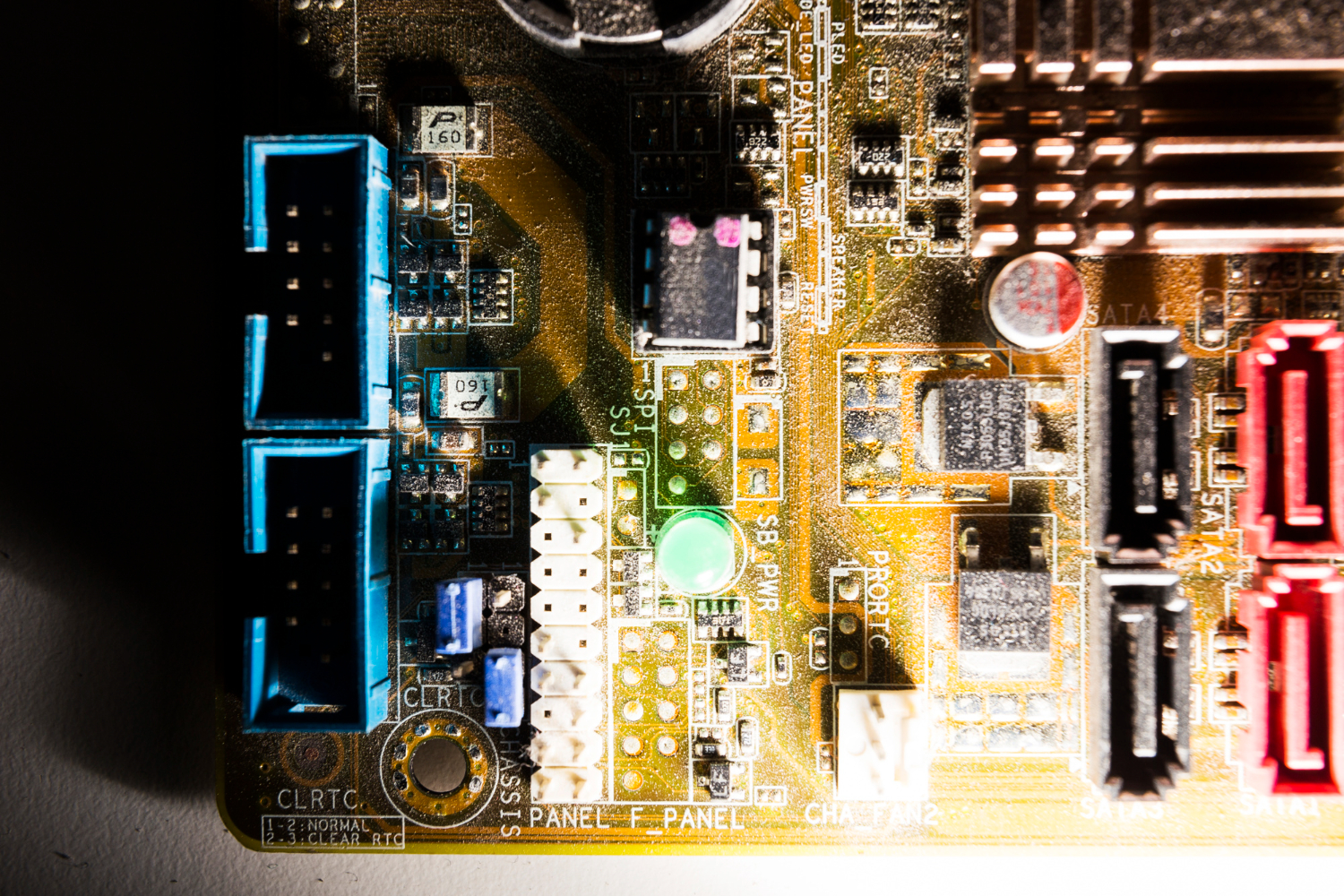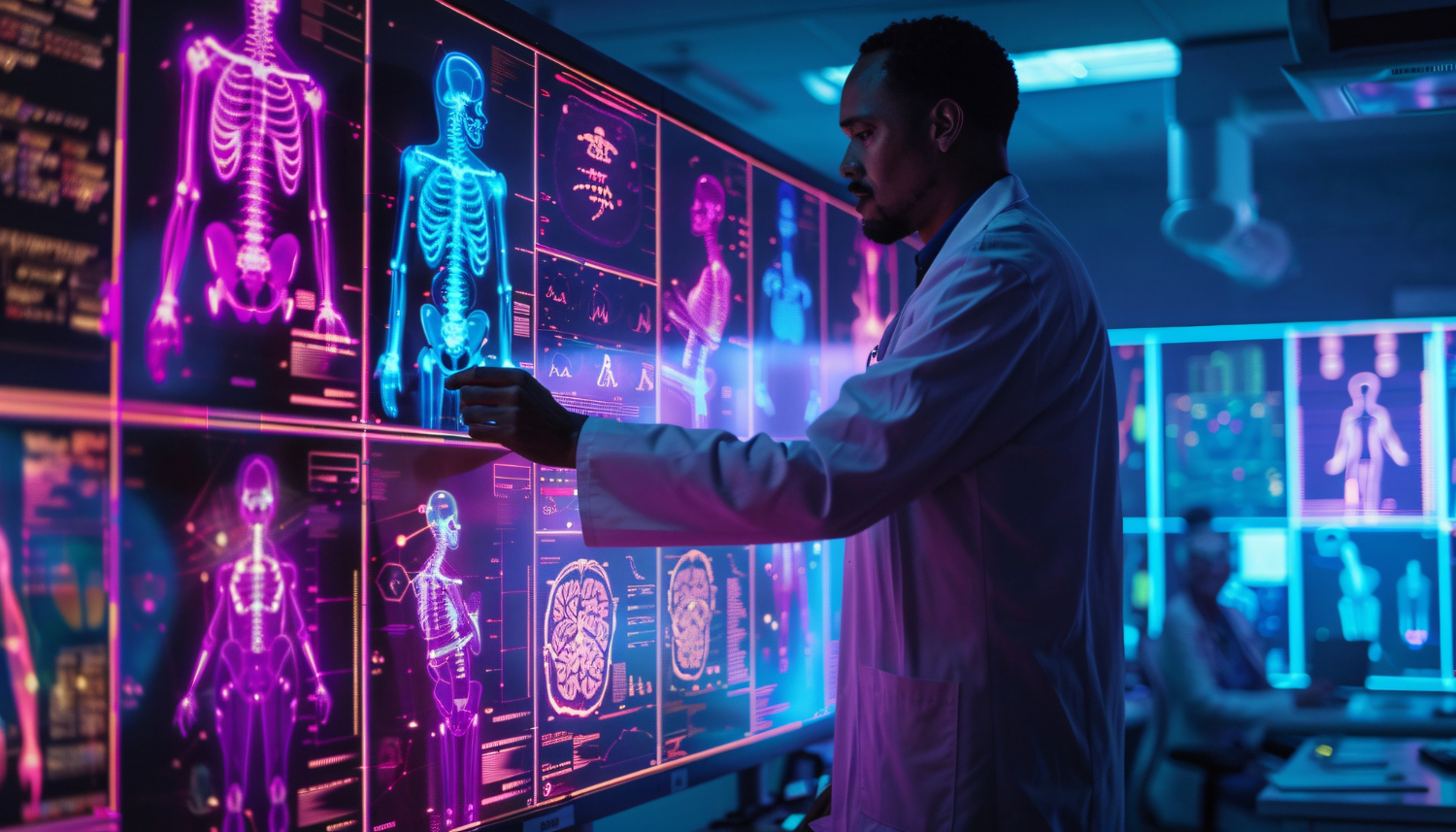What is the Key Feature of Generative AI?
Generative AI is a type of artificial intelligence that can create new and unique content. This technology relies on algorithms that generate content like images, text, and audio by learning from large datasets. The key feature of generative AI lies in its ability to create realistic and diverse content that mimics human-like intelligence.
Generative AI models have become increasingly popular due to advancements in machine learning models and deep learning. These models utilise large language models (LLMs), generative adversarial networks (GANs), and other AI systems to generate impressive results. From image generation to producing natural language processing (NLP) responses, generative AI continues to shape the way industries interact with technology.
In this article, we’ll break down the core aspects of generative AI, its key features, and how it powers many applications. We’ll also show how TechnoLynx can assist businesses in leveraging this exciting technology for innovative solutions.
Key Feature: Content Generation
The most important aspect of generative AI is its ability to generate content autonomously. This includes creating images, text, and even music. The process starts with training data – large datasets that provide examples for the AI to learn patterns and structures. The more diverse the dataset, the better the AI can mimic realistic outputs.
For instance, image generators powered by generative adversarial networks (GANs) create detailed images by pitting two models against each other. One model generates images while the other evaluates them. This results in increasingly realistic content over time. Tools like Stable Diffusion are popular examples that showcase the power of generative AI to produce high-quality visuals.
Similarly, in the realm of natural language processing (NLP), large language models like GPT, which are based on recurrent neural networks (RNNs), can generate human-like text. These models understand and produce coherent and meaningful sentences based on the input they receive. This makes them ideal for applications like chatbots and virtual assistants.
Generative AI Models
Generative AI models come in various forms, each suited to different tasks. Some of the most popular generative AI models include:
-
Generative Adversarial Networks (GANs): GANs are widely used for image generation. They consist of two models – a generator and a discriminator. The generator creates content, and the discriminator evaluates it. This process leads to the generation of increasingly realistic images.
-
Large Language Models (LLMs): These are designed to generate natural language text. LLMs like GPT-3 are trained on massive datasets of human language. They can generate high-quality text, hold conversations, and provide contextually accurate responses.
-
Recurrent Neural Networks (RNNs): RNNs are used for sequence-based tasks, making them ideal for NLP. They can understand and generate text by considering the relationships between words in a sentence. This helps in generating cohesive and relevant content.
Each of these models contributes to the ability of AI to produce realistic and valuable outputs in various domains, whether it’s generating natural language text or creating lifelike images.
To further understand how generative AI operates and its potential, we need to explore the complex relationship between AI systems and human intelligence. One of the most significant debates in AI today revolves around whether generative AI is capable of matching, or even surpassing, human creativity. Though generative AI models can produce highly realistic and novel content, it’s essential to remember that the underlying systems are not inherently creative in the way humans are. Instead, they rely heavily on patterns, probabilities, and training data to create outcomes.
Humans possess a unique ability to infer meaning, context, and emotion, factors that AI, as advanced as it is, still struggles to fully understand. Generative AI tools operate by analysing vast amounts of existing data and producing content that mirrors that data. The systems do not “think” or “feel” the way a human would; they don’t understand the nuance of the content they produce but can replicate patterns with impressive accuracy.
However, the gap between AI’s capabilities and human intelligence is narrowing. With the development of increasingly sophisticated large language models (LLMs) and deep learning techniques, AI is now able to generate content that is often indistinguishable from human-made content.
These models are trained on immense datasets, allowing them to produce coherent and contextually accurate text, mimic artistic styles, or create realistic imagery. For example, Stanford University is at the forefront of researching AI’s potential in areas like natural language processing (NLP) and machine learning models, contributing significantly to the field. The ongoing research into generative adversarial networks (GANs) and recurrent neural networks (RNNs) is pushing the boundaries of what AI can achieve.
GANs are a specific type of artificial intelligence where two neural networks, one generating content and the other evaluating it, work together to improve the realism of the output. This adversarial process ensures that the image generator or content creation tool learns from its mistakes and gradually produces higher-quality results. GANs are commonly used in applications such as Stable Diffusion and other generative AI tools that produce stunningly realistic images, art, and even deepfake videos.
RNNs, on the other hand, focus on sequential data and are especially valuable for text-based applications, like natural language processing (NLP) and language translation. They help in understanding context over time, allowing for more coherent content generation in scenarios that require an understanding of past inputs, such as conversational AI or text summarisation.
As these models improve and gain access to more compute power, the outputs generated by generative AI systems become increasingly sophisticated. AI’s ability to create not just images, but entire articles, stories, or even fully fleshed-out video game levels, is becoming more common. These developments are laying the groundwork for popular generative AI applications in industries ranging from entertainment and media to customer service and healthcare.
The key feature of generative AI lies in its ability to mimic and replicate human-like creativity by analysing patterns, structures, and inputs from the vast datasets it has been trained on. This mimicking of human creativity continues to improve as generative AI models evolve, and with further innovations in machine learning and AI systems, the gap between human and machine-generated content continues to shrink.
TechnoLynx is at the forefront of implementing these cutting-edge technologies, offering solutions that leverage generative AI to assist businesses in automating content creation, enhancing customer service, and improving operational efficiency.
Create Realistic Outputs with Training Data
One of the critical factors for successful generative AI models is the quality of the training data. These AI models need large amounts of diverse data to understand the patterns, styles, and nuances of the content they aim to generate. High-quality training data ensures that the AI can create realistic and believable outputs.
For example, when developing an image generator, the model needs access to a vast number of images. This dataset allows the AI to learn from various styles, lighting conditions, and textures. Similarly, for NLP models, access to diverse text datasets enables the AI to grasp the complexity of language, from grammar to sentiment.
However, the type and quality of training data also pose challenges. In some cases, biased or incomplete data may result in low-quality or inaccurate content. Therefore, ensuring the right data is used for training is crucial to achieving the best outcomes.
Types of Artificial Intelligence in Generative AI
Generative AI belongs to a broader category of artificial intelligence (AI). It differs from other types of AI systems in that it focuses on creating content rather than simply analysing or recognising patterns. This sets it apart from traditional machine learning models, which are primarily used for prediction or classification.
There are various types of artificial intelligence that serve different purposes:
-
Supervised Learning: Involves training the AI on labelled data where the correct output is known. This is useful for tasks like classification.
-
Unsupervised Learning: Involves training the AI on unlabelled data, allowing the AI to find hidden patterns. This approach is often used in generative models like GANs.
-
Reinforcement Learning: Focuses on teaching the AI through trial and error. The AI learns to make decisions by receiving feedback on its actions.
Generative AI is a type of unsupervised learning that seeks to generate new content based on the patterns it has learned from the data. It plays a crucial role in many industries today.
Generative AI Tools
There are several generative AI tools available that help automate the creation of various types of content. These tools often rely on deep learning algorithms and compute power to achieve impressive results. Some well-known tools include:
-
DALL·E: An image generator based on generative AI that can create artwork and visuals from text descriptions.
-
GPT-3: A large language model used for generating text-based content, whether for conversation or document creation.
-
Stable Diffusion: A popular image generation tool known for its realistic outputs and flexibility in creating artwork.
These tools have become essential for artists, writers, developers, and content creators, enabling them to speed up the content creation process and reduce manual effort.
Generative AI in Customer Service
In addition to creative fields, generative AI has shown great potential in areas like customer service. Businesses use generative AI to create chatbots and virtual assistants capable of holding conversations with users. These AI systems can answer customer queries, provide support, and even offer personalised recommendations.
Generative AI systems in customer service rely on natural language processing (NLP) to understand and respond to customer inputs in real-time. Large language models trained on extensive training data can process these inputs, making it easier to handle customer interactions without human intervention.
Moreover, the ability of AI to generate content on demand has greatly improved the efficiency of customer support operations. Companies no longer need to rely solely on human agents to handle all queries, allowing them to focus on more complex issues.
Deep Learning and Compute Power
Generative AI models require significant compute power to function. This is especially true for models like GANs, which involve a lot of computation to generate realistic images. Deep learning algorithms, which are at the core of generative AI, also require extensive computational resources.
As these models grow in size and complexity, the need for high-performance hardware increases. For instance, training data for an image generator or an NLP model may require weeks or even months of computation on specialised hardware.
High compute power is essential for training generative adversarial networks, which need to generate thousands of images and refine them based on feedback from the discriminator model. Similarly, LLMs require immense computing resources to process large volumes of text and generate natural language responses.
Popular Generative AI Applications
Generative AI is not limited to creative content production. Its applications span multiple industries:
-
Video Games: AI systems generate realistic textures, characters, and environments. Generative adversarial networks are used to create visually stunning graphics in games, enhancing player experience.
-
Healthcare: AI helps in creating synthetic data for training purposes or simulating medical scenarios. This reduces the reliance on real patient data and accelerates research.
-
Film Industry: Generative AI models can generate entire scenes, design characters, or create visual effects. This helps in cutting down production time and costs.
-
Finance: AI can generate realistic financial reports, analyse trends, and even predict future market movements based on historical data.
-
Retail: Generative AI helps create personalised shopping experiences by generating product recommendations based on user behaviour.
These applications showcase how generative AI has become a valuable tool in different industries, automating complex tasks and opening new possibilities.
How TechnoLynx Can Help
At TechnoLynx, we specialise in developing custom generative AI tools tailored to your business needs. Whether you want to build an image generator for your creative projects or develop an AI system that generates natural language responses, we have the expertise to help you.
Our team has experience working with deep learning, generative adversarial networks, and natural language processing to create robust AI models. We understand the importance of using the right training data and hardware to ensure the best performance.
We can help you integrate generative AI into your customer service, content creation, or product development processes, making it easier to automate repetitive tasks and improve efficiency.
Reach out to us at TechnoLynx, and let us help you gain the full potential of generative AI for your business.
Image credits: Freepik













